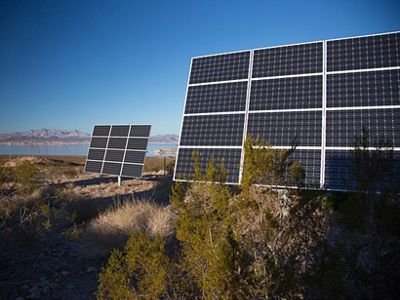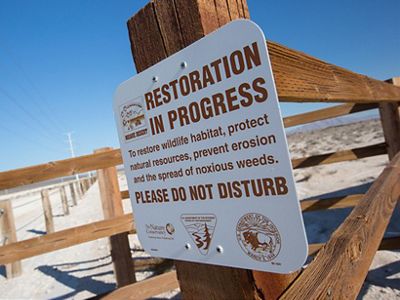At the end of the nineteenth century, great minds in America were in furious debate—should we power the future using direct current or alternating current? Nikola Tesla and George Westinghouse favored AC current because it permitted the transmission of electricity over greater distances using thinner wires. Thomas Edison feared that the high voltages of AC current were unsafe. One could say that Tesla and Westinghouse “won” the “war of the currents” because most American homes are now powered by AC current. But, in fact, we see examples of both DC and AC current in use around us every day, and advances in technology have made it easier to address the shortcomings in both AC- and DC- based systems. Sometimes changing the game isn’t about making black and white, either-or choices, but requires the sophisticated thinking that allows us to say “yes, and.”

In assessing our energy choices today, some deride renewable energy sources as not being “green” enough because they have environmental impacts. The manufacturing processes for photovoltaic cells and wind turbines have come under fire for their use of energy and corresponding emissions, and even though the Audubon Society endorses the use of most properly sited and designed solar and wind, opponents of renewable energy frequently cite impacts to birds as a reason why solar and wind are bad for the environment. All-or-nothing thinking can stand in the way of solutions, particularly in light of the game changing practice of “smart siting.”
“Smart siting” is what makes wind and solar a “yes, and” proposition,
where we’re not choosing between wildlife and wattage. The principle is
simple—reduce the impact of solar and wind on the environment by
choosing locations that avoid critical wildlife populations and other
environmental impacts and use offsets to mitigate impacts that do occur.
At The Nature Conservancy, our North American Energy Project has shown
that while navigating the issue of environmental impact in renewable
energy development isn’t simple, it can be done.
The Mojave, North America’s driest desert and home to bighorn sheep, desert tortoises, and even fish that survive in hot tub-like waters, is one of the most diverse places for plants and animals in the United States. This extreme environment is also ideal for large-scale solar energy development. Several of the first large-scale projects were built in critical wildlife habitats. To avoid further conflict, the Bureau of Land Management (BLM) worked with an array of partners, including The Nature Conservancy, to develop the Western Solar Plan. Dry Lake, just north of Las Vegas, is one of the first low-conflict “Solar Energy Zones” to be developed under this solar blueprint. Three projects totaling 440 MW were approved in less than half the average permitting time for previous projects on BLM lands (the first of which, Switch Station 1, went live this December). To offset the impacts that do occur, nearly $6 million will be spent to restore and protect similar habitats in the area. Similar low-conflict zones in California’s Mojave region are being developed—enough to provide clean solar power to over 9.4 million homes. The first of these projects went online this month.

In the Great Plains and Midwest, grasslands and wetlands sustain wildlife, while vast expanses of pasture and croplands feed the world. The region’s abundant wind resources have also become a hotspot for renewable energy development with over 50,000 MW of wind turbine capacity installed. Forecasts suggest this figure could more than triple during the next 20 years. With tens of thousands of new turbines coming, conflicts with wildlife, other environmental values and people are inevitable without smart siting.
Fortunately, new tools and strategies are emerging to dramatically reduce the potential for conflict. The wind industry has sponsored a voluntary Habitat Conservation Plan (HCP) under which developers would avoid critical habitats for endangered species, implement operational restrictions during bird migrations, and offset unavoidable habitat impacts across eight Midwestern states. If approved by the U.S. Fish and Wildlife Service, this smart energy siting initiative would rival the scope and scale of the Western Solar Plan. And, just to the west, The Nature Conservancy has launched the Site Wind Right initiative to provide wind developers, utilities and large energy consumers with a roadmap to low-conflict wind development sites from Texas to North Dakota.
Thomas Edison’s entire approach to invention was based on working a problem through many iterations in order to reach a solution that ultimately worked. As Edison used to say, “Our greatest weakness lies in giving up. The most certain way to succeed is always to try just one more time.” The principle behind smart siting channels the spirit of Edison—instead of giving up on solar and wind because they aren’t zero impact, keep working on the problem, examining the options until a solution that avoids the majority of impacts emerges. Just as Edison’s approach led to hundreds, even thousands of successes, the effort we put into smart siting pays off in cleaner energy, fewer emissions, and a low-carbon future.
